Post by Funkytown on Nov 14, 2022 10:07:31 GMT -6
NFLytics: Is there a model for elite receivers? by Matthew Coller
...
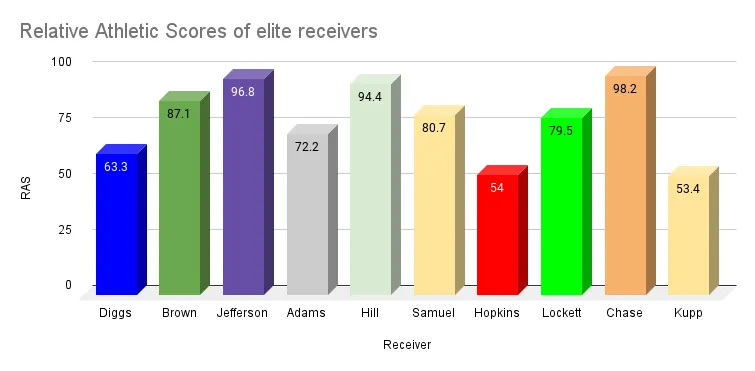
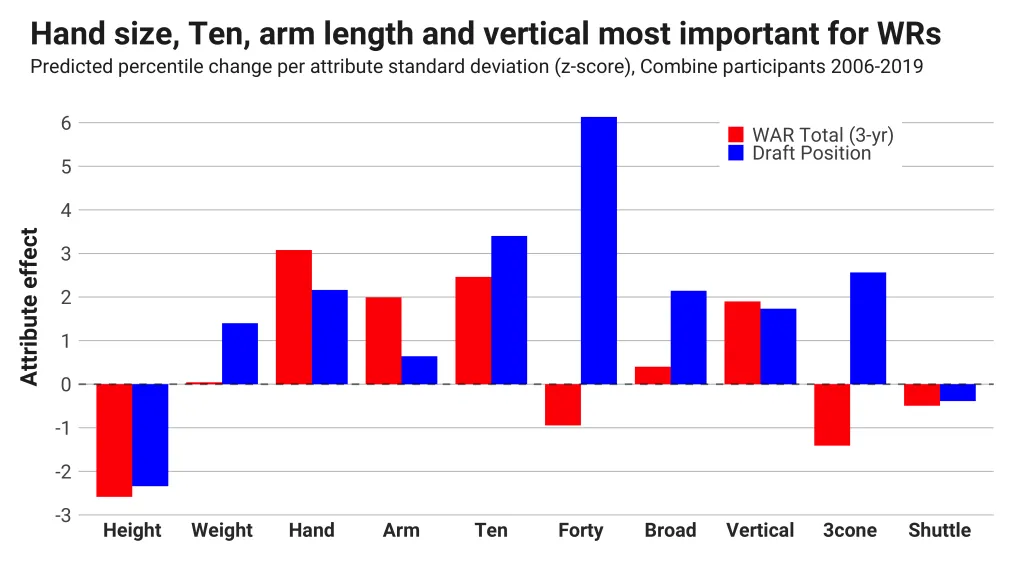
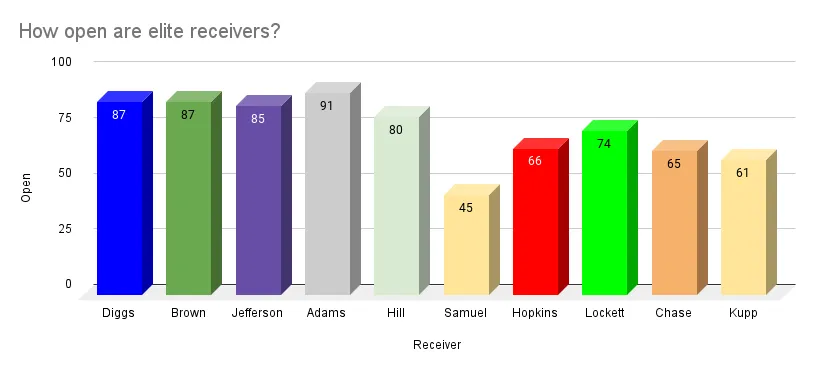
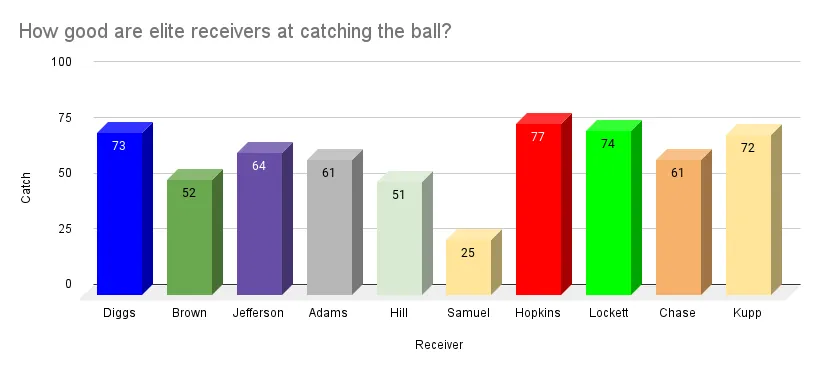
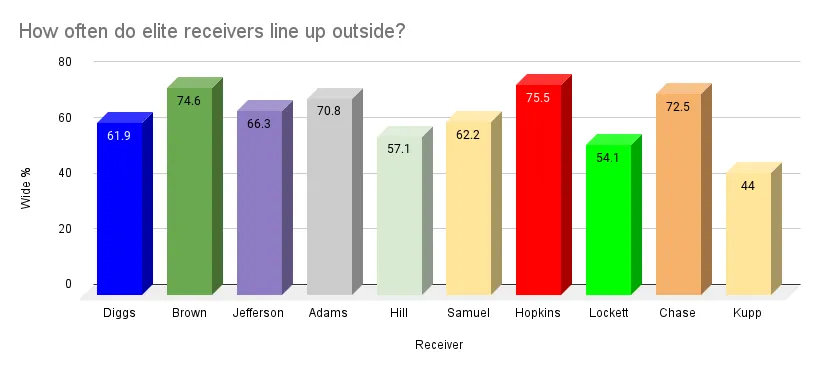
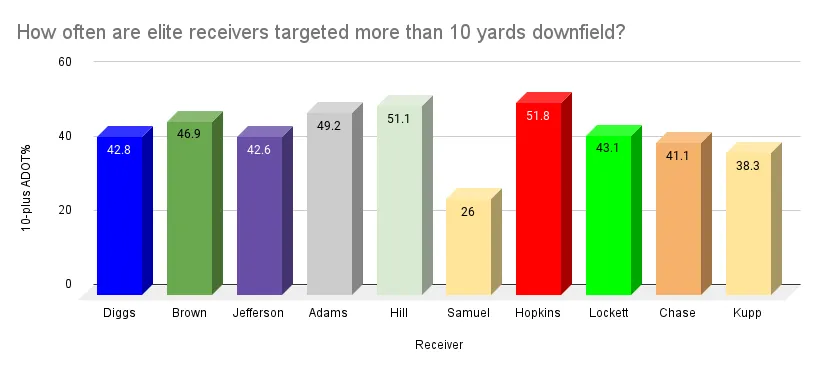
...
More discussion and analysis at the link:
purpleinsider.substack.com/p/nflytics-is-there-a-model-for-elite
cc: Uncle and Danchat
One of the biggest storylines in the NFL this year has been the decrease in scoring. Only one other time this decade (2017) has the league seen offenses dip under 44 total points per game and passing yards are down more than 30 yards per game since 2020. Despite the broader numbers suggesting that life is harder on offenses, top receivers are still thriving. Last year 25 receivers finished with at least 1,000 yards. This year 29 receivers are on pace to clear that mark.
Business may be good for a lot of receivers but there are only a handful that could reasonably be called the NFL’s best — they are the ones who set franchise records and drive offenses regardless of double teams, deep zones, press coverages and whatever other plans opponents dial up against them. They are the type that teams are willing to pay $20-plus million per year or trade first-round picks to acquire.
But aside from putting up impressive box score statistics, what makes the top receivers who they are? Why is a small group of players so much better than the solid starters?
Powered by the data prowess of football analytics pioneer Brian Burke, the website FiveThirtyEight used NFLNextGEN tracking data to answer that question. They took three categories that are fundamental to excellence at the position — getting open, catching the ball and running after catch — and used the data to quantify those areas on a 1-100 scale for each player.
How can we figure out if someone was open based on tracking data? Burke explained it this way: “The probability of a catch of a typical receiver, given all the contextual details of a pass route, including route type, depth, coverage and many other variables, we can set a benchmark of expected ‘openness’ agnostic to the ability of the receiver to get open.”
The catch and yards-after-catch metrics are straightforward. How often does a receiver bring in the football above what was expected based on the locations of the player and defenders and how many more yards were gained after the catch based on those same factors.
These three elements alone can tell us a lot about top wide receivers and why they dominate. There’s also more that we can add to the mix from other data sources to contextualize their games. How did they perform at the NFL Combine? Where do these receivers line up? How often do they go downfield?
With these metrics we can paint a picture of each receiver’s strength and style.
Here are the receivers we will be studying: AJ Brown, Stefon Diggs, Justin Jefferson, DaVante Adams, Tyreek Hill, Deebo Samuel, DeAndre Hopkins, Tyler Lockett, Ja’Marr Chase and Cooper Kupp.
Business may be good for a lot of receivers but there are only a handful that could reasonably be called the NFL’s best — they are the ones who set franchise records and drive offenses regardless of double teams, deep zones, press coverages and whatever other plans opponents dial up against them. They are the type that teams are willing to pay $20-plus million per year or trade first-round picks to acquire.
But aside from putting up impressive box score statistics, what makes the top receivers who they are? Why is a small group of players so much better than the solid starters?
Powered by the data prowess of football analytics pioneer Brian Burke, the website FiveThirtyEight used NFLNextGEN tracking data to answer that question. They took three categories that are fundamental to excellence at the position — getting open, catching the ball and running after catch — and used the data to quantify those areas on a 1-100 scale for each player.
How can we figure out if someone was open based on tracking data? Burke explained it this way: “The probability of a catch of a typical receiver, given all the contextual details of a pass route, including route type, depth, coverage and many other variables, we can set a benchmark of expected ‘openness’ agnostic to the ability of the receiver to get open.”
The catch and yards-after-catch metrics are straightforward. How often does a receiver bring in the football above what was expected based on the locations of the player and defenders and how many more yards were gained after the catch based on those same factors.
These three elements alone can tell us a lot about top wide receivers and why they dominate. There’s also more that we can add to the mix from other data sources to contextualize their games. How did they perform at the NFL Combine? Where do these receivers line up? How often do they go downfield?
With these metrics we can paint a picture of each receiver’s strength and style.
Here are the receivers we will be studying: AJ Brown, Stefon Diggs, Justin Jefferson, DaVante Adams, Tyreek Hill, Deebo Samuel, DeAndre Hopkins, Tyler Lockett, Ja’Marr Chase and Cooper Kupp.






...
The bottom line
When it comes to the NFL’s best receivers, one size does not fit all but all have exceptional traits in one way or another. In almost all cases that has to start with the ability to get open. Outliers are just that.
What these numbers allow us to do is study which receivers might deserve the ball more often and which might have red flags because they can’t create separation. It also shows us that despite the rise in quality performances by receivers there are still those who stand above the rest and with this data we can see why.
When it comes to the NFL’s best receivers, one size does not fit all but all have exceptional traits in one way or another. In almost all cases that has to start with the ability to get open. Outliers are just that.
What these numbers allow us to do is study which receivers might deserve the ball more often and which might have red flags because they can’t create separation. It also shows us that despite the rise in quality performances by receivers there are still those who stand above the rest and with this data we can see why.
purpleinsider.substack.com/p/nflytics-is-there-a-model-for-elite
cc: Uncle and Danchat
















 ... and neither is this Chris guy.
... and neither is this Chris guy.